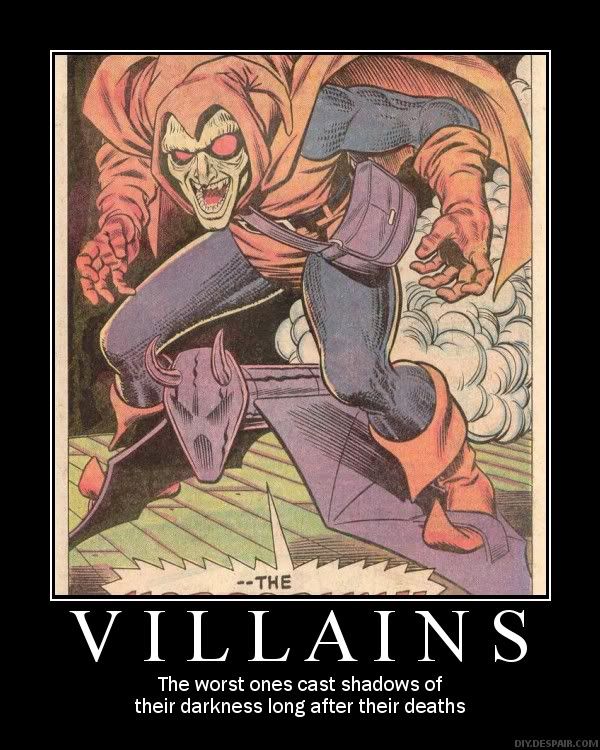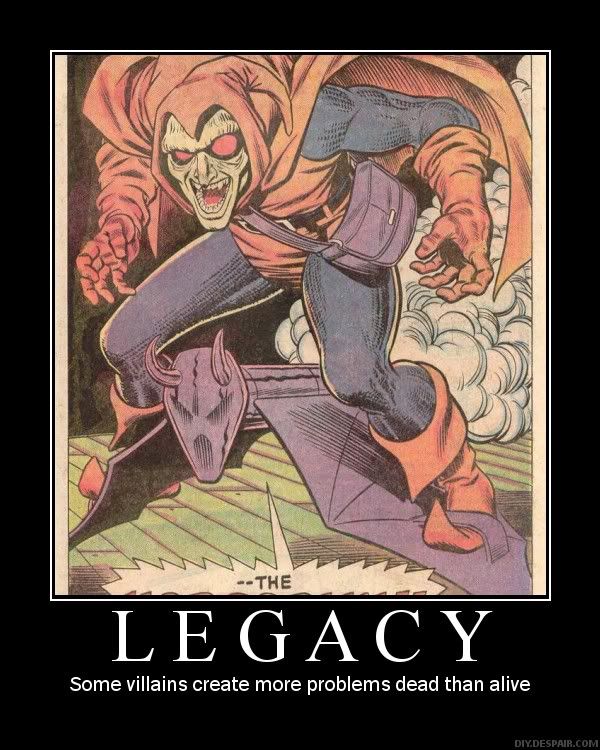
One of the big problems I mentioned in my overview of the current Spider-Man status quo last month was that I felt the villains had no arc or development. Now, to understand what I'm talking about, let's use what is probably the baseline for villain development in the Spider-Man books during the time period the current regime wants to recapture - Hobgoblin. A glancing inspection of the character's history reveals some interesting contrasts between what happened then and what's going on now.
The first thing we can note is that Hobgoblin's development is that, like recent Spider-Man villains, he was developed primarily by one writer (Roger Stern), but also through various other writers in a more-or-less cohesive editorial group, in multi-issue-per-month Spider-Man comic (over multiple titles, of course). The primary divergence here is that while Stern could have been seen as the primary writer, he wasn't the only one working with the character.
The next interesting thing to point out is that the Hobgoblin was a frequent opponent in the books at the time, and even when he wasn't the direct villain of the issue or arc, his presence was usually felt in the background or was even the focus of the B or C-plot. Because of this, the impact and consequences of the villain's schemes and actions were allowed to sink in. That's a pretty good thing to have in any story, especially in a superhero story where the primary action is often physically or emotionally violent - the consequences of said violence. Compare this to the consequences of...actually, this could be said of just about any Marvel villain except Nitro in the last 5 years or so? It's usually limited to the arc of whatever writer is on the book at the time, and the consequences are usually (but not always) delayed until the next time that particular villain appears. This is in part a consequence of the fact that with the current writer-centric focus in "Big Two" supercomics that some writers feel an ownership over a given character and his/her effects on the larger story, and that's a totally valid instinct - but in the sense of a larger super-narrative where you are sharing all the characters and stories with others, it can end up hurting the long game.
The Hobgoblin's schemes themselves are an interesting point of inspection - in that he had some fairly clear ones. His earliest efforts were focused on blackmailing Norman Osborn's business partners (and Harry Osborn) in order to get capital to build his own criminal power base. Oh and he decided to hold his main extorting event in the same building where the Kingpin was dining, did I mention that? This very slick bit of plotting immediately established two things about the Hobgoblin - that he was crafty and sheer-out-ballsy. It builds up the character as a legitmate rival to the Kingpin without direct confrontation or some other cheap storytelling gimmick. This is a pretty stark contrast to Ultimate Mysterio bumping off Kingpin in the Ultimate Spider-Man comics after only a couple of minor appearances or the Hood becoming the Kingpin of Supervillains because...he made a speech or something? Come to think of it, has the Green Goblin ever had a solid agenda beyond "Get Revenge on Spider-Man!"? There's been some very vague things about criminal workings, but never anything solid enough as a story in its own right.
Now, maybe setting the Hobgoblin as the standard for new Spider-Man villains is a bit rough - after all, you could say he was the biggest success by chance, or because the writing team also incorporated his mysterious identity into the mix. Those are fair comments to make - however, this exact same build-up and character development process was applied consistently throughout the late 70s and 8os, and even into the 90s for nearly all of Spider-Man's villains and supporting cast. I could have easily made this article about Tombstone, or Venom, or the Black Cat, or the revitalization of Robbie Robertson (of which Tombstone was a big part) or Doctor Octupus. Take a look at those comics and that build up during this time period - the self-same era that the current Spider-group wants so clearly to emulate, and ask yourself if you think they are doing a good job.

1 comment:
Wow, the current BND-ASM is just such a pathetic book when you realize what the writers are trying to do.
ASM #238 (Hobgoblin's origin) is such a classic issue...and the kind of comic you'd never see Marvel selling today. It's all about the origin and the slow-build to "when is Spider-Man going to tangle with this guy?". I loved that issue as a teen and loved the entire run with Stern at the helm. Unfortunately, other writers couldn't keep up the solid work that Stern began with.
barreljumper.com
Post a Comment